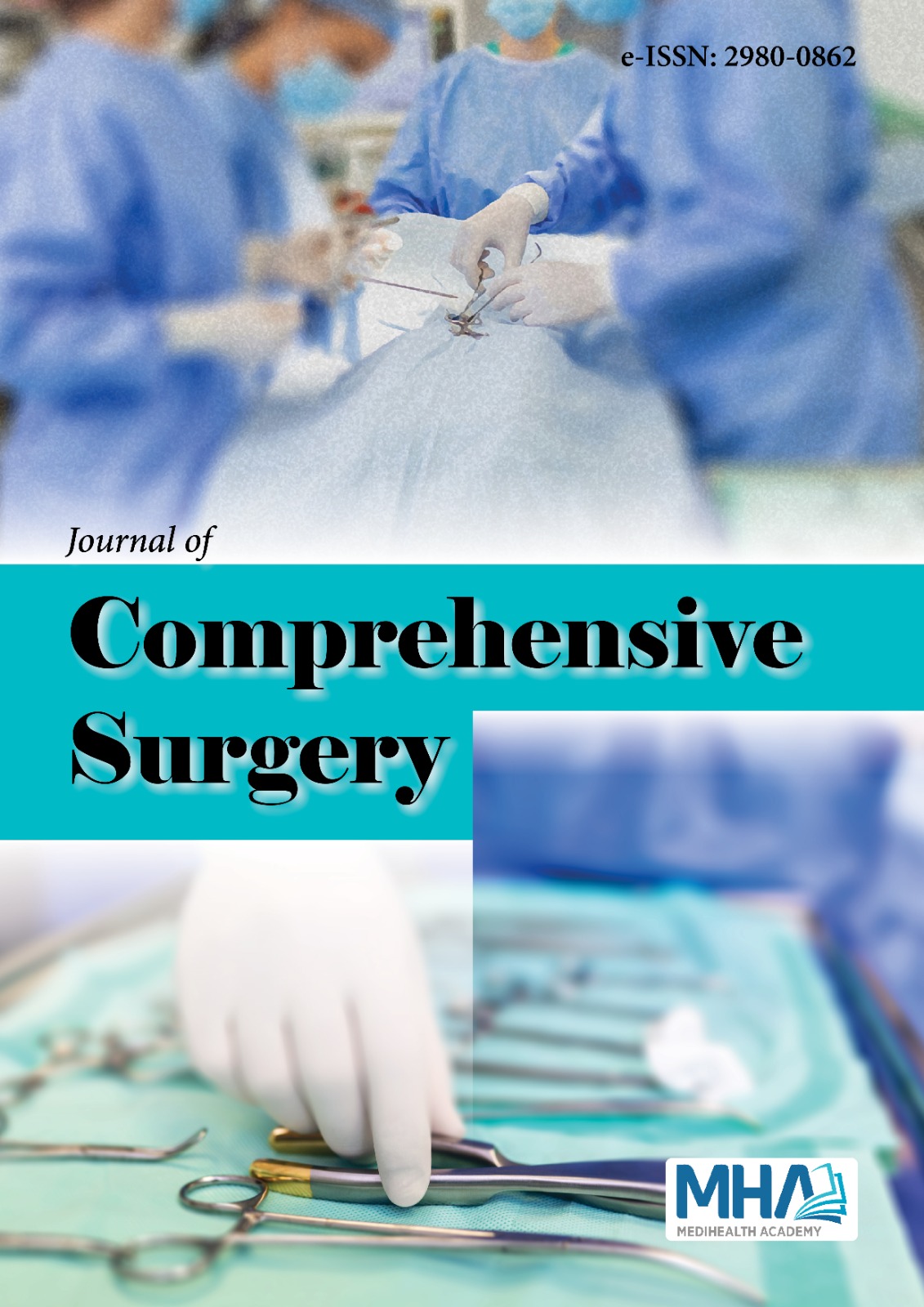1. Dekker E, Tanis PJ, Vleugels JLA, et al. Colorectal cancer. Lancet.2019;394(10207):1467-1480. Available from: https://pubmed.ncbi.nlm.nih.gov/31631858/
2. Venook AP, Niedzwiecki D, Innocenti F, et al. Impact of primary (1o)tumor location on overall survival (OS) and progression-free survival(PFS) in patients (pts) with metastatic colorectal cancer (mCRC):Analysis of CALGB/SWOG 80405 Alliance. 2016;34(15_suppl):3504https://doi.org/101200/JCO20163415.
3. Li C, Wang Q, Jiang KW. What is the best surgical procedure oftransverse colon cancer? an evidence map and minireview. WorldJ Gastrointest Oncol. 2021;13(5):391. Available from: /pmc/articles/PMC8131907/
4. Hohenberger W, Weber K, Matzel K, et al. Standardized surgery forcolonic cancer: complete mesocolic excision and central ligation--technical notes and outcome. Colorectal Dis. 2009;11(4):354-364.Available from: https://pubmed.ncbi.nlm.nih.gov/19016817/
5. Knol J, Keller DS. Total mesorectal excision technique-past, present,and future. Clin Colon Rectal Surg. 2020;33(3):134-143. Available from:https://pubmed.ncbi.nlm.nih.gov/32351336/
6. Heald RJ, Husband EM, Ryall RDH. The mesorectum in rectalcancer surgery—the clue to pelvic recurrence? British J Surgery.1982;69(10):613-616. doi.org/10.1002/bjs.1800691019
7. Di Buono G, Buscemi S, Cocorullo G, et al. Feasibility and safetyof laparoscopic complete mesocolic excision (CME) for right-sidedcolon cancer: short-term outcomes. a randomized clinical study. AnnSurg. 2021;274(1):57-62. Available from: https://pubmed.ncbi.nlm.nih.gov/33177355/
8. Siddiqi N, Stefan S, Jootun R, et al. Robotic complete mesocolic excision(CME) is a safe and feasible option for right colonic cancers: shortand midterm results from a single-centre experience. Surg Endosc.2021;35(12):6873-6881. Available from: https://pubmed.ncbi.nlm.nih.gov/33399993/
9. Yüksel BC, Er S, Çetinkaya E, et al. Does transverse colon cancerspread to the extramesocolic lymph node stations? Acta ChirurgicaBelgica. 2019;121(2):102-108. Available from: https://www.tandfonline.com/doi/abs/10.1080/00015458.2019.1689642
10. Lee MS, Menter DG, Kopetz S. Right versus left colon cancerbiology: integrating the consensus molecular subtypes. J NationalComprehensive Cancer Network. 2017;15(3):411-419. Available from:https://jnccn.org/view/journals/jnccn/15/3/article-p411.xml
11. Stintzing S, Tejpar S, Gibbs P, et al. Understanding the role of primarytumour localisation in colorectal cancer treatment and outcomes. Eur JCancer. 2017;84:69-80.
12. Brulé SY, Jonker DJ, Karapetis CS, et al. Location of colon cancer (right-sided versus left-sided) as a prognostic factor and a predictor of benefitfrom cetuximab in NCIC CO.17. Eur J Cancer. 2015;51(11):1405-1414.Available from: https://pubmed.ncbi.nlm.nih.gov/25979833/
13. Huyghe JR, Harrison TA, Bien SA, et al. Genetic architectures of proximaland distal colorectal cancer are partly distinct. Gut. 2021;70(7):1325-1334. Available from: https://pubmed.ncbi.nlm.nih.gov/33632709/
14. Meguid RA, Slidell MB, Wolfgang CL, et al. Is there a difference insurvival between right- versus left-sided colon cancers? Ann SurgOncol. 2008;15(9):2388-2394. Available from: https://link.springer.com/article/10.1245/s10434-008-0015-y
15. Benedix F, Kube R, Meyer F, et al. Comparison of 17,641 patientswith right- and left-sided colon cancer: differences in epidemiology,perioperative course, histology, and survival. Dis Colon Rectum.2010;53(1):57-64.
16. Wray CM, Ziogas A, Hinojosa MW, et al. Tumor subsite location withinthe colon is prognostic for survival after colon cancer diagnosis. DisColon Rectum. 2009;52(8):1359-1366. Available from: https://journals.lww.com/dcrjournal/fulltext/2009/08000/tumor_subsite_location_within_the_colon_is.1.aspx
17. Suttie SA, Shaikh I, Mullen R, et al. Outcome of right- and left-sidedcolonic and rectal cancer following surgical resection. Colorectal Dis.2011;13(8):884-889. Available from: https://onlinelibrary.wiley.com/doi/full/10.1111/j.1463-1318.2010.02356.x
18. Thörn M, Bergström R, Kressner U, et al. Trends in colorectal cancerincidence in Sweden 1959-93 by gender, localization, time period, andbirth cohort. Cancer Causes Control. 1998;9(2):145-152. Available from:https://pubmed.ncbi.nlm.nih.gov/9578291/
19. Stewart RJ, Stewart AW, Turnbull PRG, et al. Sex differences in subsiteincidence of large-bowel cancer. Dis Colon Rectum. 1983;26(10):658-660. Available from: https://pubmed.ncbi.nlm.nih.gov/6884156/
20. Schub R, Steinheber FU. Rightward shift of colon cancer. a feature ofthe aging gut. J Clin Gastroenterol. 1986;8(6):630-634. Available from:https://pubmed.ncbi.nlm.nih.gov/3805659/
21. Huyghe JR, Harrison TA, Bien SA, et al. Genetic architecturesof proximal and distal colorectal cancer are partly distinct. Gut.2021;70(7):1325-1334. Available from: https://pubmed.ncbi.nlm.nih.gov/33632709/
22. Lee MS, Menter DG, Kopetz S. Right versus left colon cancerbiology: integrating the consensus molecular subtypes. J NationalComprehensive Cancer Network. 2017;15(3):411-419. Available from:https://jnccn.org/view/journals/jnccn/15/3/article-p411.xml
23. Lee GH, Malietzis G, Askari A, et al. Is right-sided colon cancerdifferent to left-sided colorectal cancer? - a systematic review. EJSO.2015;41(3):300-308.
24. Wang D, Agrawal R, Zou S, et al. Gupta r. Anatomic location ofcolorectal cancer presents a new paradigm for its prognosis in AfricanAmerican patients. PLoS One. 2022;17(7):e0271629. Available from: /pmc/articles/PMC9337663/
25. Biffi R, Botteri E, Bertani E, et al. Factors predicting worse prognosisin patients affected by pT3 N0 colon cancer: long-term results of amonocentric series of 137 radically resected patients in a 5-year period.Int J Colorectal Dis. 2013;28(2):207-215. Available from: https://pubmed.ncbi.nlm.nih.gov/22903336/
26. Huh JW, Kim HR, Kim YJ. Prognostic value of perineural invasionin patients with stage II colorectal cancer. Annals Surgical Oncology.2010;17(8):2066-2072. Available from: https://link.springer.com/article/10.1245/s10434-010-0982-7
27. Pai RK, Jayachandran P, Koong AC, et al. BRAF-mutated,microsatellite-stable adenocarcinoma of the proximal colon:an aggressive adenocarcinoma with poor survival, mucinousdifferentiation, and adverse morphologic features. Am J Surg Pathol.2012;36(5):744. Available from: /pmc/articles/PMC6362986/
28. Guidelines Detail [Internet]. [cited 2023 Jul 24]. Available from: https://www.nccn.org/guidelines/guidelines-detail?category=1&id=1461
29. Guidelines Detail [Internet]. [cited 2023 Jul 24]. Available from: https://www.nccn.org/guidelines/guidelines-detail?category=1&id=1428
30. Webber AA, Gupta P, Marcello PW, et al. Lymph node retrieval coloncancer: are we making the grade? The American J Surgery. 2023;226(4):477-484. Available from: http://www.americanjournalofsurgery.com/article/S0002961023002210/fulltext
31. Huang Y, Ji L, Zhu J, et al. Lymph node status and its impact onthe prognosis of left-sided and right-sided colon cancer: A SEERpopulation-based study. Cancer Med. 2021;10(23):8708. Available from:/pmc/articles/PMC8633222/
32. Yang L, Xiong Z, Xie Q, et al. Prognostic value of total number oflymph nodes retrieved differs between left-sided colon cancer andright-sided colon cancer in stage III patients with colon cancer. BMCCancer. 2018;18(1):1-12. Available from: /pmc/articles/PMC5948673/

